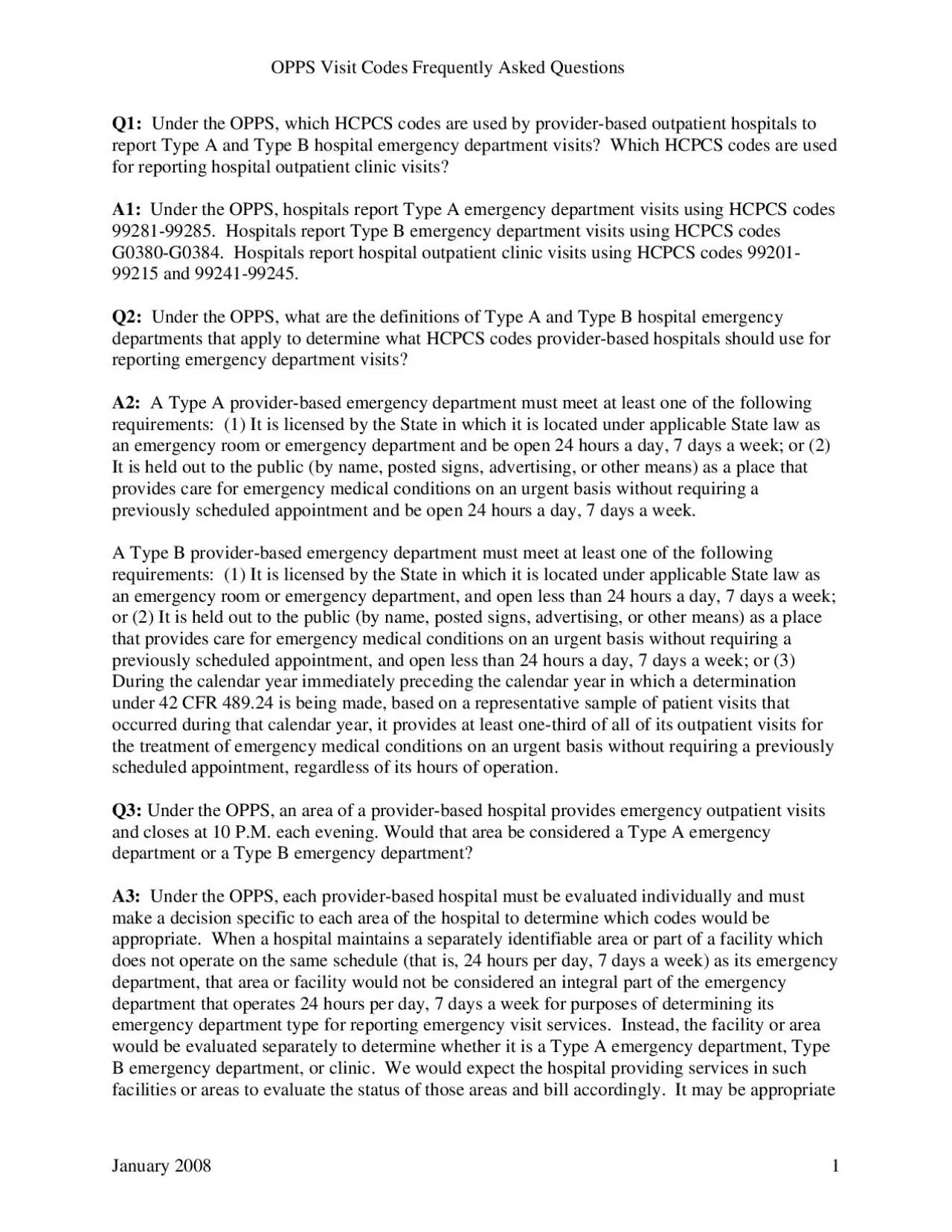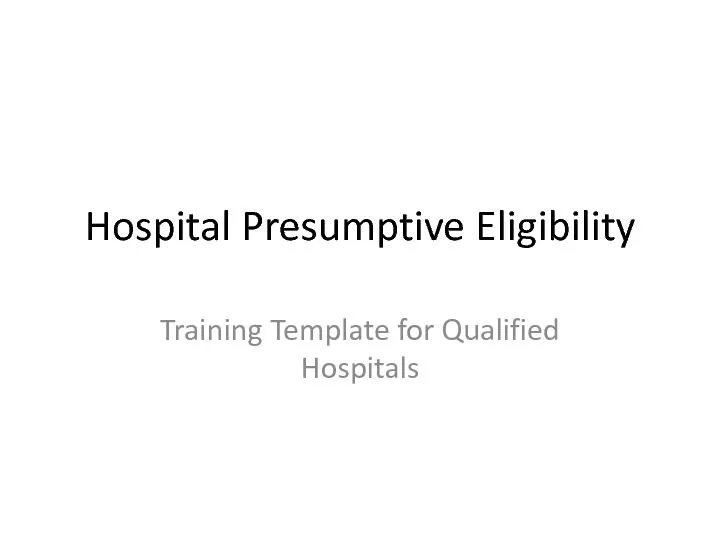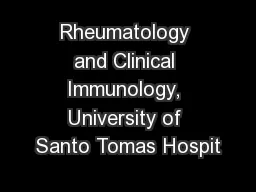PDF-Under the OPPS what are the definitions of Type A and Type B hospit
Author : layla | Published Date : 2022-09-07
A Type B providerbased emergency department must meet at least one of the following requirements 1 It is licensed an emergency room or emergency department and open
Presentation Embed Code
Download Presentation
Download Presentation The PPT/PDF document "Under the OPPS what are the definitions ..." is the property of its rightful owner. Permission is granted to download and print the materials on this website for personal, non-commercial use only, and to display it on your personal computer provided you do not modify the materials and that you retain all copyright notices contained in the materials. By downloading content from our website, you accept the terms of this agreement.
Under the OPPS what are the definitions of Type A and Type B hospit: Transcript
Download Rules Of Document
"Under the OPPS what are the definitions of Type A and Type B hospit"The content belongs to its owner. You may download and print it for personal use, without modification, and keep all copyright notices. By downloading, you agree to these terms.
Related Documents














